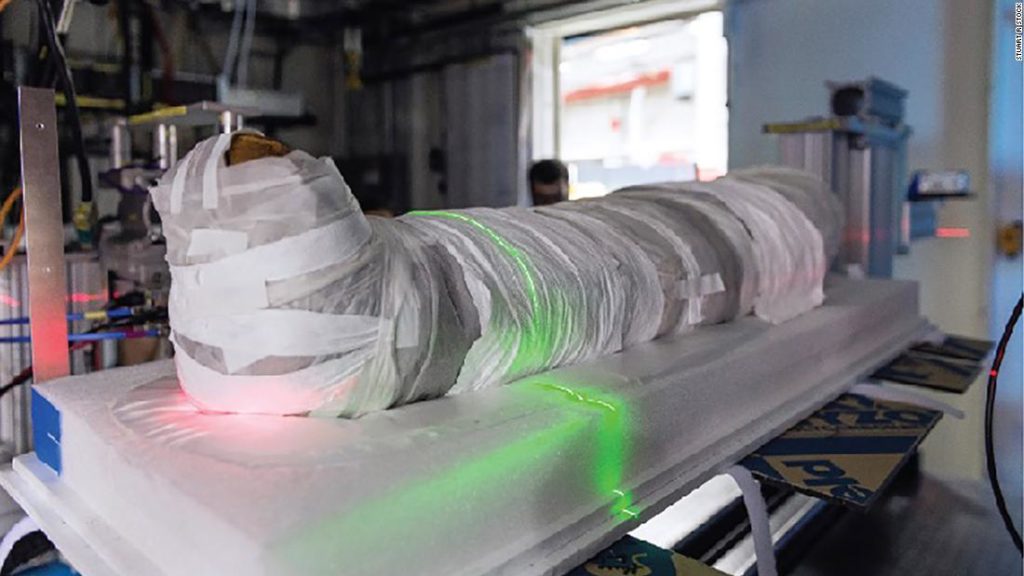Researchers used a new combination of CT (computed tomography) technology and X-ray diffraction to reveal clues about a Roman-era Egyptian mummy, which was discovered in Hawara, Egypt.
For nearly a century, Egyptian mummies have been imaged noninvasively with X-rays. In findings outlined in the Journal of the Royal Society on Tuesday, the team of researchers described using a combination of CT scanning and X-ray diffraction for the first time, revealing clues about the ancient corpse lying inside.
Using a CT scan to create a “three dimensional roadmap” of the contents of the mummy, experts shone X-ray beams smaller than the diameter of a human hair onto the mummy to identify the objects inside the item’s wrappings, lead author Stuart Stock told CNN.
“The X-rays give off what is essentially a fingerprint that is characteristic of the material,” Stock, a researcher at Northwestern University’s Feinberg School of Medicine in Chicago, explained.
What the experts from Northwestern University, Argonne National Laboratory and Metropolitan State University of Denver found on the body — thought to belong to a 5-year-old child — surprised them.
Researchers found a small chunk of very pure calcium carbonate in the mummy, which they believe is the right shape to be a scarab beetle, which was traditionally placed in an incision in the abdomen during mummification.
“This opaque object is about the right shape for a scarab,” Stock explained. “The scarab is the symbol of rebirth,” he added.
The item gives further clues about the social status of the mummy — though not royalty, “this person was in the upper echelons of society” if such a pure material was used in their burial, Stock said.
“They could afford to have a scarab and mummification, which required a tremendous amount of resources,” he said.
A study of the body also showed the child, thought to be a girl, did not suffer a violent end.
“It looks like there was no skeletal trauma,” Stock said. “We don’t know why this young child died.”
A portrait attached to the mummy also reveals further clues about its occupant, with the hairstyle depicted dating the mummy to between 150 and 200 AD. Portrait mummies have a lifelike painting of the deceased incorporated into the mummy wrappings and placed over the person’s face.
Experts believe that the technique could be used for further studies on mummies, giving further clues as to the object buried alongside the ancient corpses, without the need to disturb and tamper with bodies.
“Back in the day (in Victorian times), they would take them apart,” Stock told CNN. “We don’t like to do that anymore.”
You may also like
-
UK coronavirus variant has been reported in 86 countries, WHO says
-
NASA technology can help save whale sharks says Australian marine biologist and ECOCEAN founder, Brad Norman
-
California Twentynine Palms: Explosives are missing from the nation’s largest Marine Corps base and an investigation is underway
-
Trump unhappy with his impeachment attorney’s performance, sources say
-
Lunar New Year 2021: Ushering in the Year of the Ox

